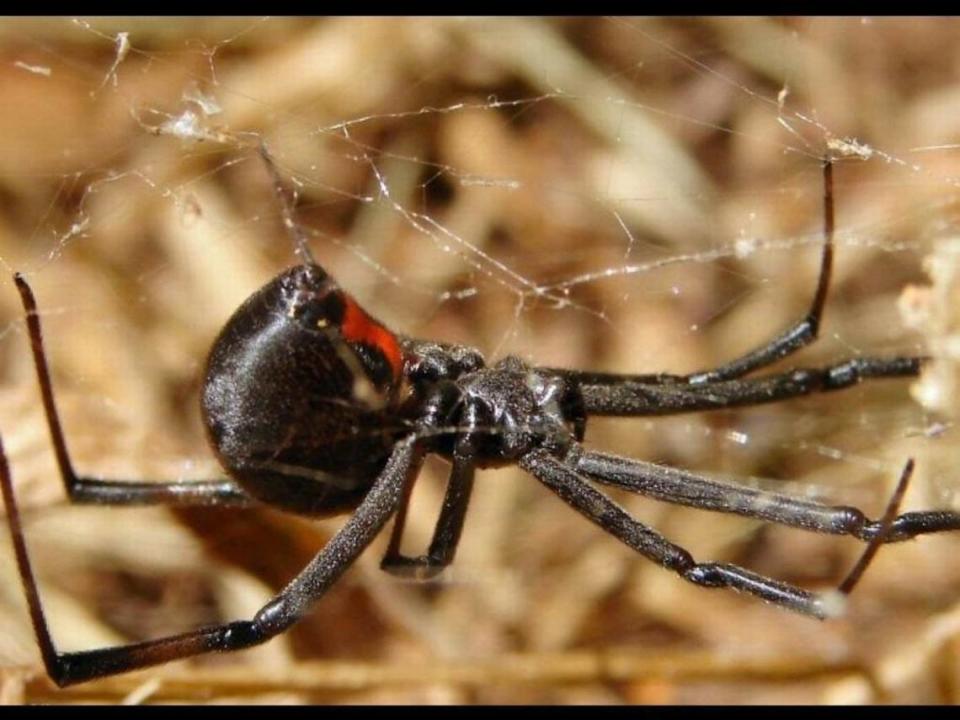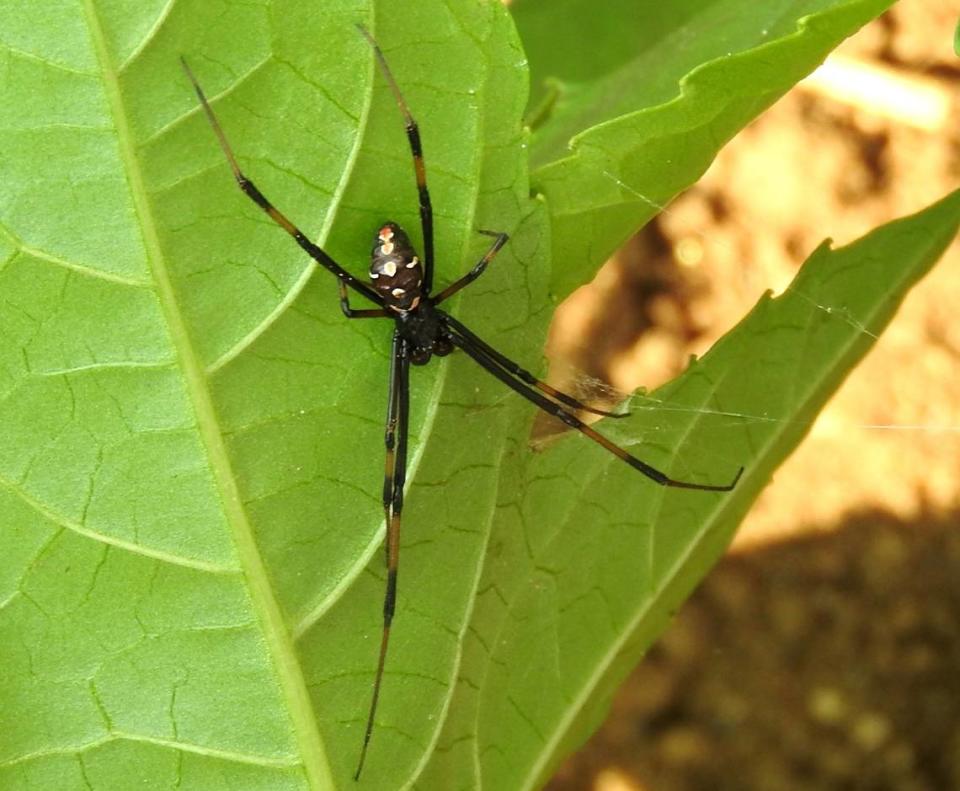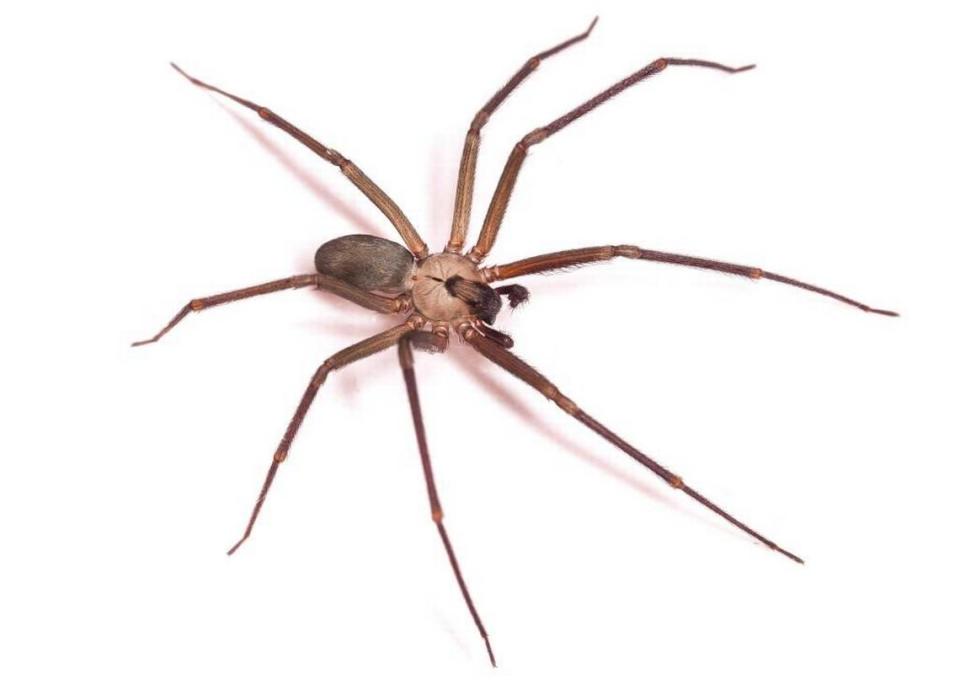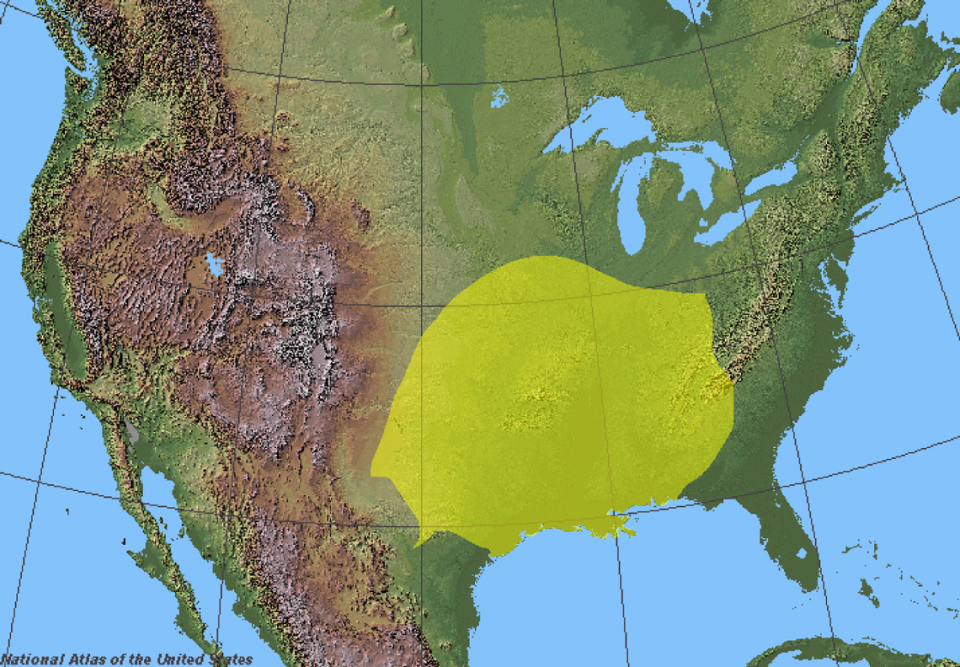Kentucky has 2 spiders dangerous to humans. Here’s how to identify — and avoid them
Though widely feared, most spider species in the Bluegrass State pose no threat to humans, and according to the University of Kentucky Entomology Department, only two varieties are of medical significance in the rare event of a bite: the black widow and the brown recluse.
Here’s what to know about these spiders, including tips from entomologists for managing them if their populations get out of control in or around your home.
Black widow - Latrodectus hesperus

Darkly beautiful and dangerous — but only when forced to bite — the black widow is a far cry from the deadliest spider on the planet as they’re sometimes described. They are, however, the most venomous spider in North America, Smithsonian Magazine notes.
With a pin-prick bite that triggers symptoms such as painful cramps and cold sweats, difficulty breathing, headaches, nausea and numbness around the bite itself, a brush with a black widow will likely send you to the emergency room. However, data shows black widow bites are rare, and fatal bites are rarer still.
The 2021 National Poison Data System report from America’s Poison Centers (the latest available) reported just 1,004 black widow bites and zero of them were fatal. You’re much more likely to be harmed by cleaning products or medications stored in your home than by a black widow, the report’s data shows.
The bites are also rarely fatal, and black widows really only bite defensively.

Females are characterized by their large abdomens and the red, hourglass-shaped symbol that marks the area. In comparison, males are much smaller and have yellow, red and white bands and spots on their backs.
Black widows gravitate toward dark, undisturbed places. According to Kansas entomologist Travis Aggson, that includes basements and crawl spaces, wood piles and the underside of decks or inside sheds, barns or similar undisturbed structures.
According to UK entomologist Jonathan Larson, people may stick a hand into a black widow’s messy web while they’re moving things, gathering firewood, weeding or doing other chores around the house.
“The bite is unpleasant, usually resulting in pain at the bite [site] but can progress to including stomach cramps, muscle pain, and vomiting,” Larson told the Herald-Leader in an email.
Unlike the brown recluse, which likes to room indoors with you, the black widow generally shuns the inside of your home. The one exception is the corners of your garage, so keeping those well-swept is advisable.
Some tips from Action Pest Control of Kentucky for managing black widows include the following:
Prevention: Cut down on clutter in places you know black widows like. Assorted dry clutter in dark spaces, such as storage areas, invite black widows searching for refuge. Do your best to tidy up and organize these spaces.
Intervention: Actively look out for them. Black widows don’t spin neat and pretty spiraling webs like Charlotte. A black widow’s web is tangled, crisscrossed and typically built close to the ground. Their webs are also quite strong and have been used to make crosshairs for precision instruments.
Still, according to Larson, black widow activity can be hard to “prevent,” to a significant degree.
“They pop up in places we don’t necessarily manage, and they are just taking advantage of the location,” Larson noted.
Brown recluse - Loxosceles reclusa

Sometimes called the violin or fiddleback spider, the brown recluse spider is found throughout the south central and Midwestern U.S., including Kentucky, according to UK Entomology. Adults are light brown in color and possess a violin-shaped mark on their back, right above the eyes. They are sometimes confused for cellar spiders, which spin webs, unlike brown recluse spiders.
Infestations in the Bluegrass State are more common the farther west you go, but even when a home is infested with these spiders, bites are rare. They’re called “recluse” for a reason.
“Brown recluses, as the name implies, also live in out of the way areas,” according to Larson. “In a home, they can be in wall voids, crawl spaces, storage area, and piles of things that haven’t been moved in a while. Brown recluses do not construct a web, cellar spider and sac spiders that are often confused for them do build webbing.”
When a person is bitten by a brown recluse, it’s usually due to the spider being inadvertently crushed or trapped against bare skin. The initial bite is often painless, and brown recluse spiders have small fangs that aren’t big enough to penetrate clothing, according to UK entomologist and Professor Emeritus Michael Potter.
“Recluses bites happen when taking things out of storage, for example a client I met put on a jacket stored in their attic and a recluse was inside it,” Larson wrote. “When pressed up against his skin, he was bitten. Most bites results in a small hole in the skin. Some may have a more serious reaction and others may get a secondary infection in the wound, both of which require further medical intervention. Brown recluse bites are much rarer than assumed, they are often offhand blamed for anything thought of as a ‘spider bite.’”
The large necrotic wounds caused by a brown recluse bite that you sometimes see depicted are rare, likely occurring in less than 10% of cases, according to the Illinois Department of Health.
More often, the bite will remain localized and heal within three weeks without severe complications, according to Potter. If you are bitten by what you believe to be a brown recluse spider, apply ice, elevate the affected area and check in with your doctor.
In some cases, “the victim may develop a necrotic lesion, appearing as a dry, sinking bluish patch with irregular edges, a pale center and peripheral redness. Often there is a central blister. As the venom continues to destroy tissue, the wound may expand up to several inches over a period of days or weeks. The necrotic ulcer can persist for several months, leaving a deep scar,” Potter writes.

Still, it’s difficult to directly attribute a wound to a spider bite, even for trained medical professionals. Potter notes there are many kinds of infections, such as a staph infection, that can closely mimic a brown recluse bite. Bites can sometimes trigger fever, chills, dizziness, a rash or vomiting, but this doesn’t happen often.
The brown recluse spider is a hunting spider that takes a more active approach to feeding, preferring to venture out at night to prey on small bugs, or even a smaller brown recluse, as they’re known to be cannibalistic.
Eliminating them from your home, if you happen to notice a few of them, is difficult. Virtually any dark, undisturbed place in your home could be an ideal home for them, and they enjoy living in homes that have an abundance of prey.
Taming an out of control brown recluse population will likely require the use of pesticides, Potter writes. While glue traps will take care of the braver males, the females will remain hidden in seclusion.
Consider following some of these tips Potter recommends for avoiding brown recluse bites:
Move your bed away from the wall and remove any bed skirts or ruffles that make contact with the floor.
Shake out your shoes and keep your clothing off the floor, or at least give it a good shake before putting it on.
Remove clutter and put away items you don’t often use into storage using sealable plastic containers
When sorting through boxes in storage, wear long sleeves and gloves to avoid being bitten.
Note: 10 a.m. Oct. 3: This article has been updated with more information to better contextualize the rarity of a black widow bite.
Do you have a question about critters in Kentucky for our service journalism team? We’d like to hear from you. Fill out our Know Your Kentucky form or email ask@herald-leader.com.

